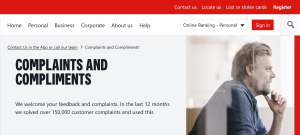I hope you find my writing and business tips and observations useful. My business and blog are dedicated to helping businesses communicate clearly and reach their potential.
Read, subscribe to my newsletter, enjoy!Tash
So when is it?
I just followed a link to a site about a small business expo/summit to see if it would be of value to me.
The link showed a list of presenters but where and when were more important questions for me. Fair enough, I followed a link so I didn’t go to an introductory page so clicking to another page is reasonable.
“Where is event” is in their menu which is fantastic so I now know it is in Sydney.
It took 5 more clicks (including clicking on the “program” link in the menu – the program just lists times on a Wednesday…) before I found it is on July 27. To be fair, I then checked the home page but it isn’t listed there either.
It’s a pity an event supported by big business and with Government speakers can’t make it easy to find critical details on their website, but it’s another lesson for those of us responsible for communicating to clients and prospective clients – identify the key information and make it easy to find.
Making key data easy to find is more than putting in on one page, too – if people enter the site at different pages or read a few pages before looking for the key data, you want them to find it easily too.
So include key data on every page (in a footer or a graphic for example) or have a clear menu item on every page.
What is key data? Well here are some examples:
- contact details
- location where relevant (don’t assume an online store doesn’t need this as people like to know which country they are ordering from if nothing else)
- event details like dates and locations
- who you are – a business, organisation or personal name should be prominent
- shipping information (for an online store)
- terms and conditions (it may not be the first thing I look for, but when I need to know the terms I must be able to find them)
How do you react when a website lacks (or hides, deliberately or by poor thought) key details you are after? And, no, I am not going to that expo (although not entirely because the date was obscured).





Leave a Reply